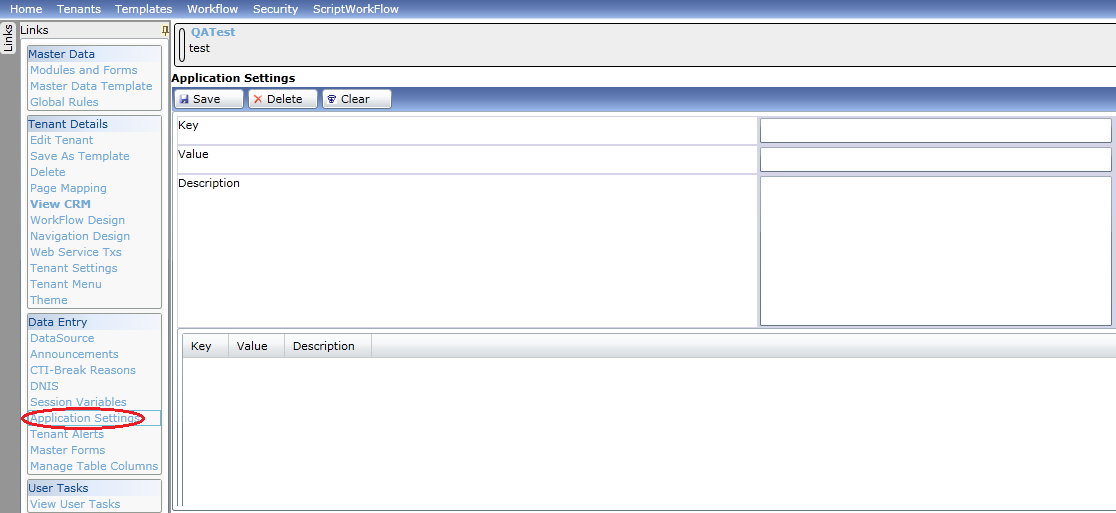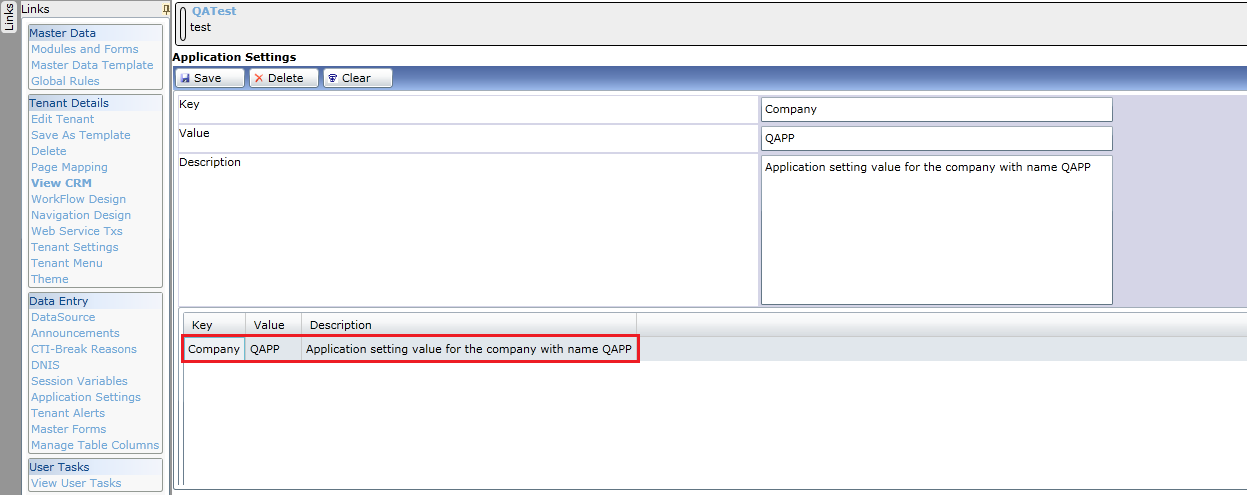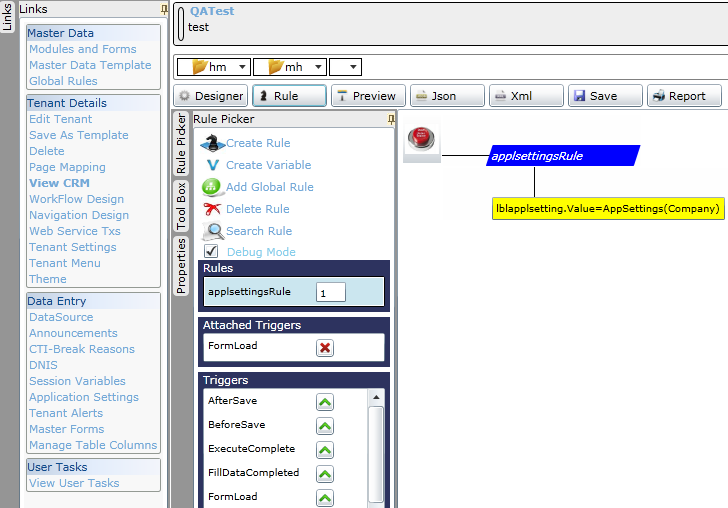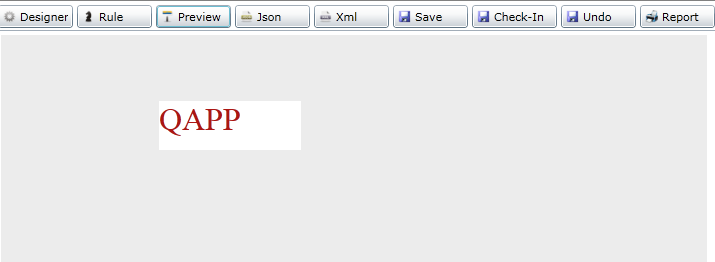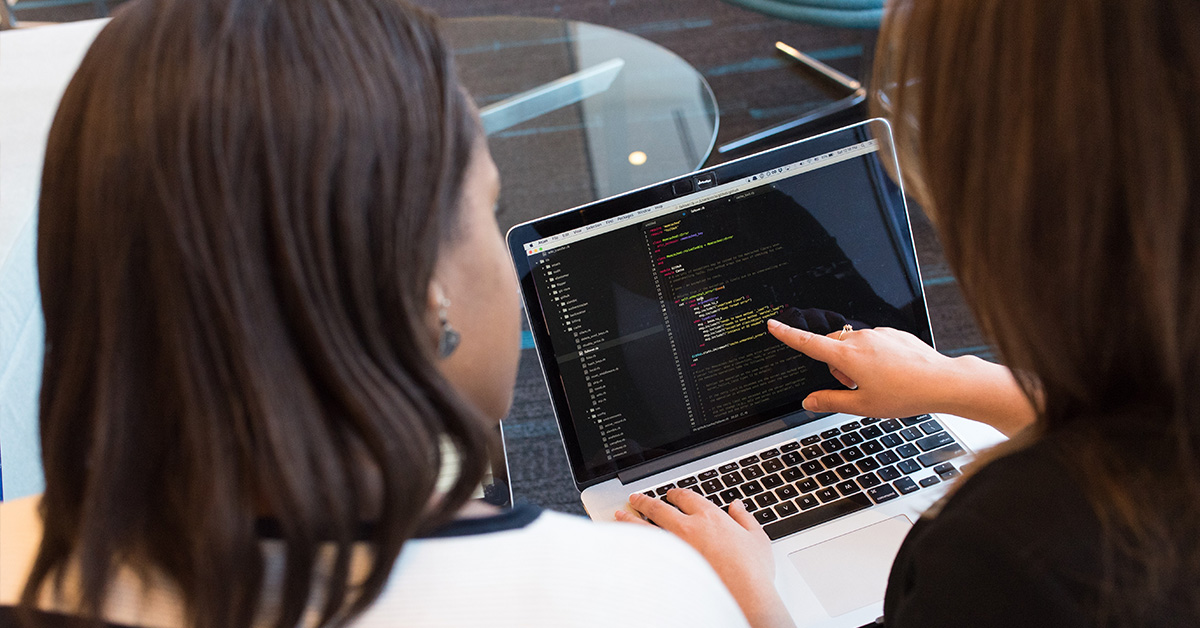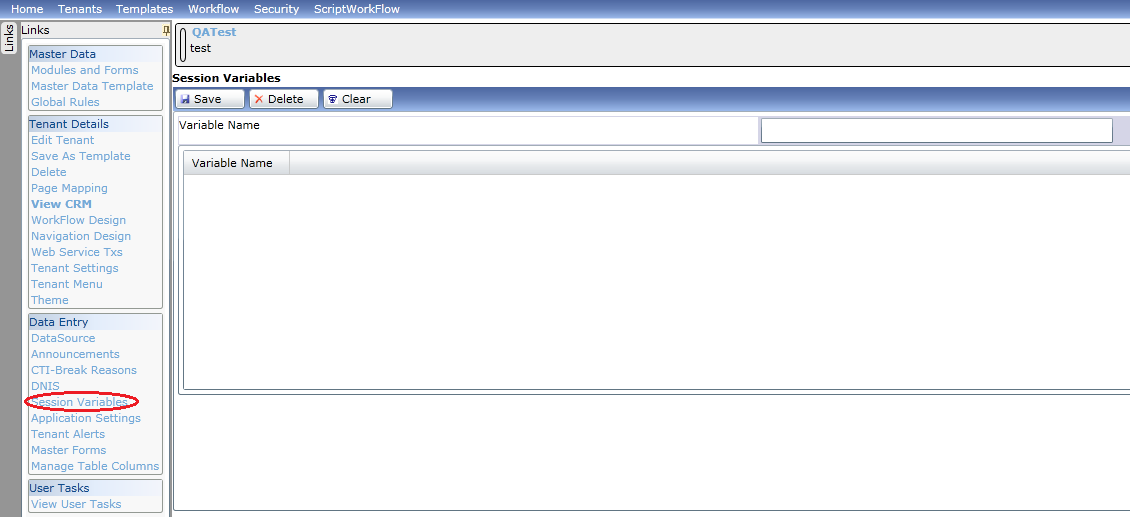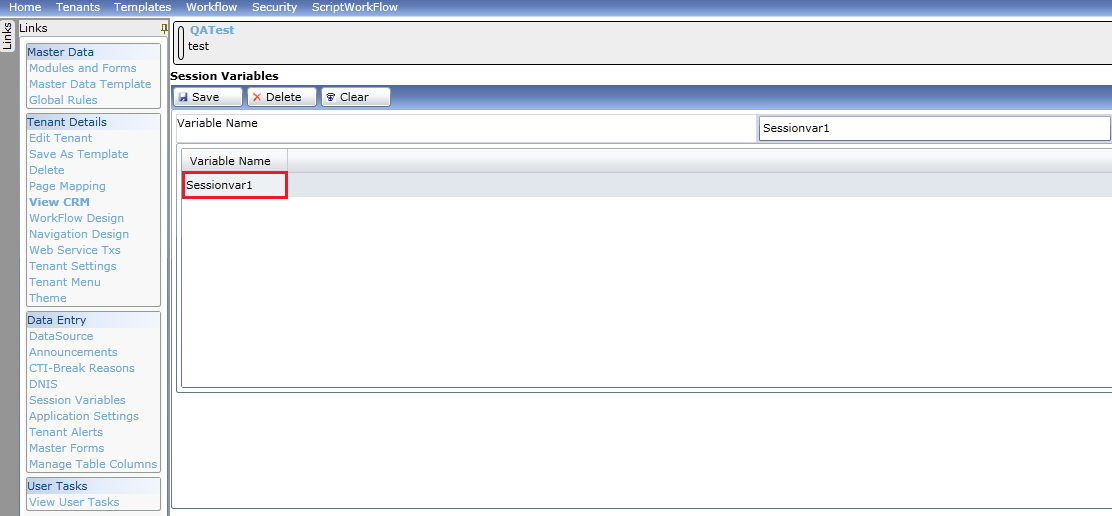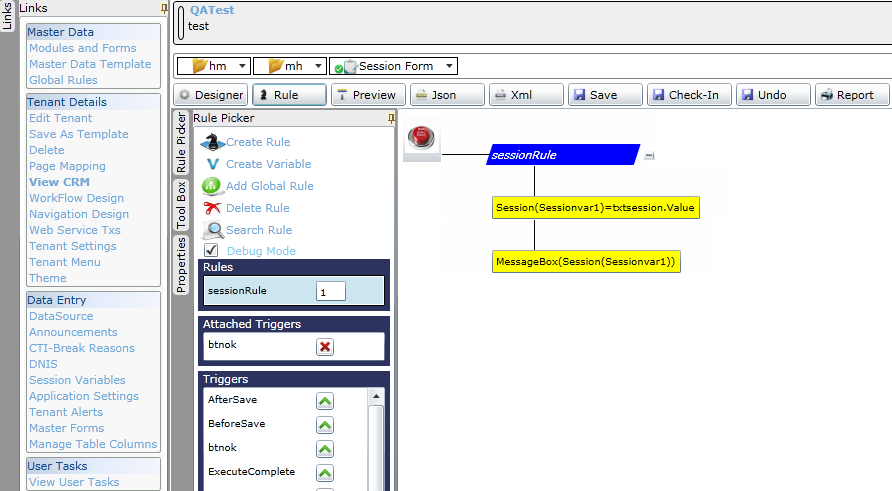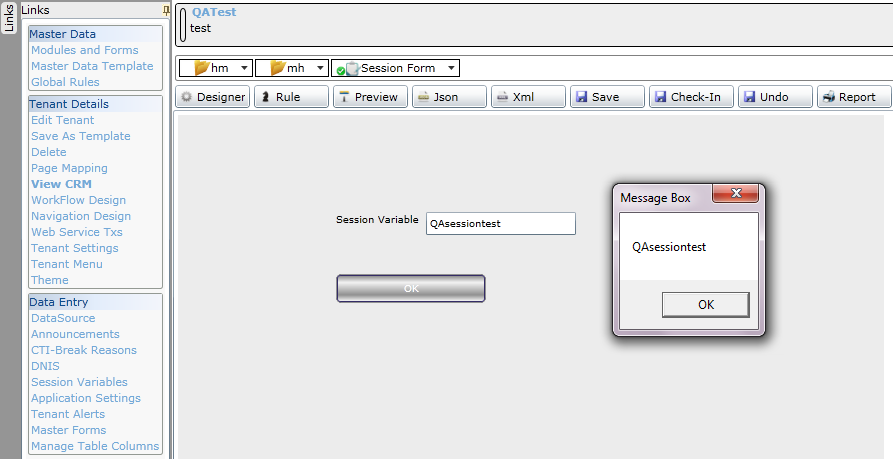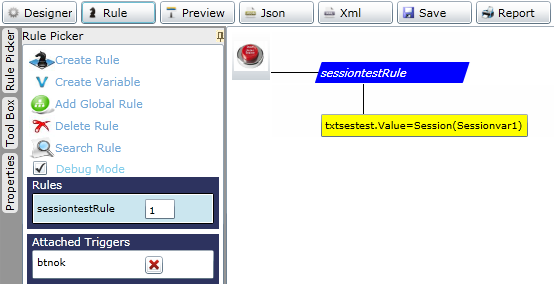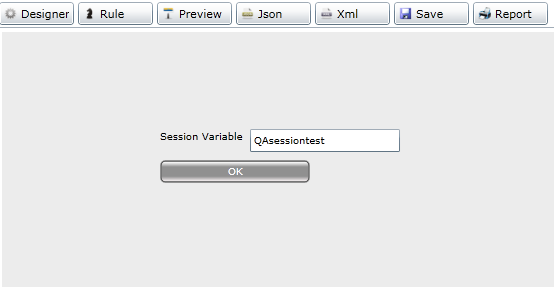ClaySys AppForms 1.0
Application Settings variables are mainly used when a default value set by the user is to be maintained throughout the application. On clicking Application Settings under the Data Entry section the following form is displayed:
The Application Settings page has the following contents:
- Save: On clicking this button the Application Settings with provided Key is saved and displayed in the Application Settings grid below.
- Delete: On clicking this button a saved Application Settings Key from the Application Settings grid can be deleted.
- Clear: On clicking this button data entered in the text boxes can be cleared.
There are three text boxes for data entry:
- Key: A meaningful variable name which can be used throughout the application.
- Value: Enter a value of the key defined.
- Description: Enter description of the key defined.
An Application Settings grid with Key, Value, Description columns which displays all the defined keys with their Value and Description is provided at the bottom of the form.
Example:
In this example an Application Settings Key (Company) with its Value (QAPP) is defined and viewed in the Application Settings grid as in figure below:
Example Flow:
- Create an Application Settings Key, its Value and save it.
- Create a form “AppForm” with a label “lblappsettings”.
- In the rules section, add a rule named “appsettingsRule”. This rule is created to display the Application Settings Value in “lblappsettings” as in figure below.
- Add an action to the rule lblappsettings.Value=AppSettings(Company).
- Attach trigger as FormLoad.
Preview:
The figure below displays the Value of Application Settings Key set.

